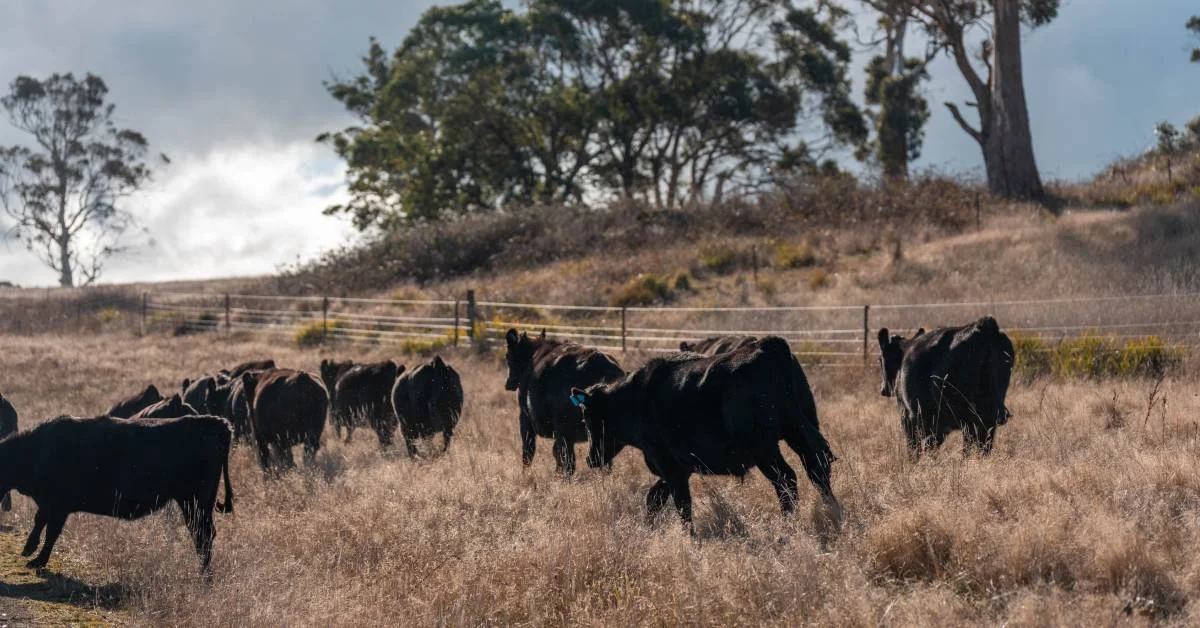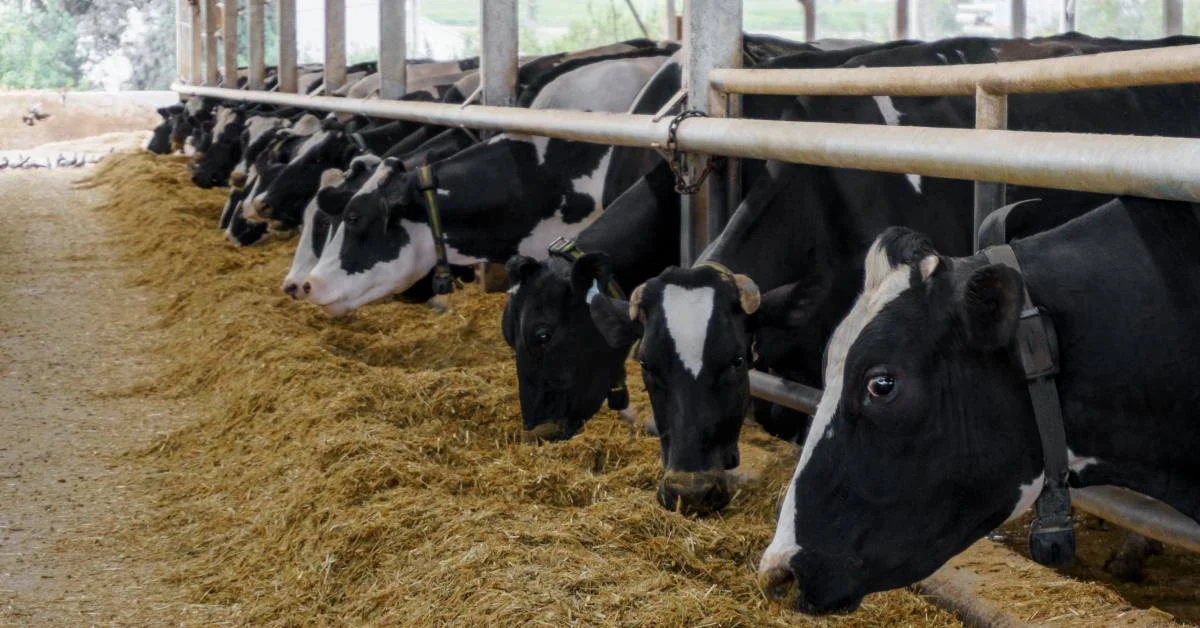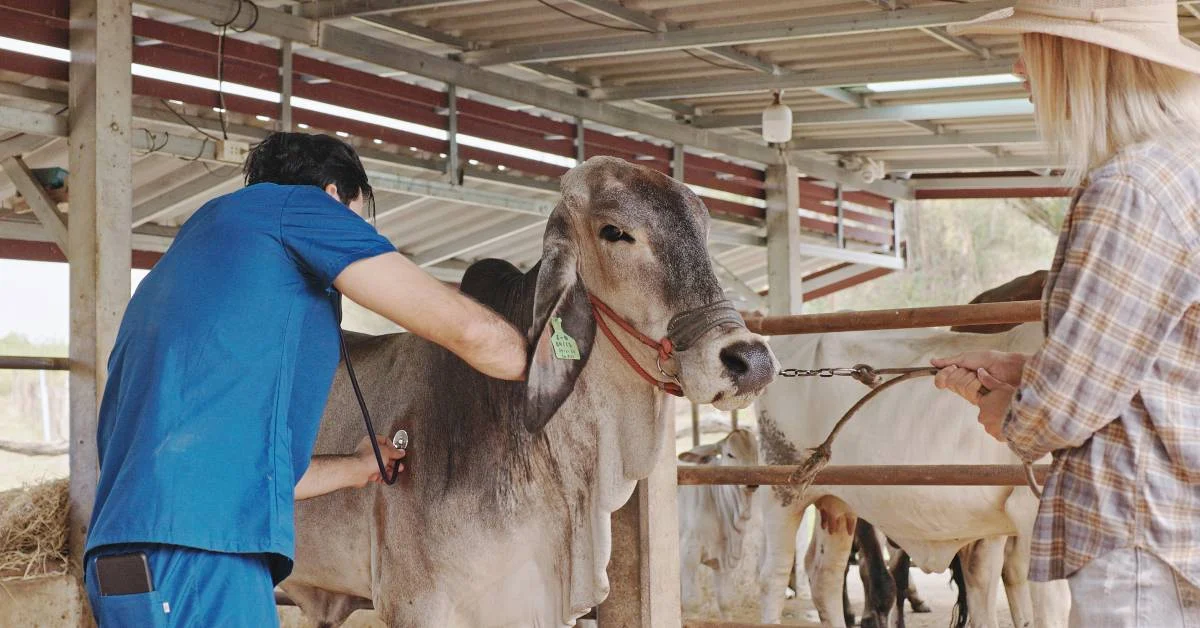The Internet of Things (IoT) has proven to be the new moneymaker, changing industries everywhere and emphasizing connectivity and data. Different sectors have been transformed with the IoT, and efficiency and productivity have increased, which would have seemed impossible a few years ago.
However, agriculture is the most significant area where IoT is felt the most. IoT sensors in agriculture revolutionize the farming and livestock industry, allowing farmers to increase production, cut expenses, and control the fields and cattle more efficiently than ever.
Fundamental to all this change is the capacity of IoT to offer real-time information and state-of-the-art technologies that can assist farmers in their decision-making and farming process. Precision farming is one of IoT’s most significant applications in agricultural areas.
Using IoT sensors in agriculture, farmers can obtain as much data as they need about the environment by monitoring parameters like soil moisture and temperature, humidity level, and nutrients.
This information is further processed so farmers can make necessary changes to their farming operations regarding tender age, growth, feeding, watering, and other factors affecting livestock.
In addition, through IoT technologies, monitoring and controlling livestock becomes effective and easy. Sensors placed in the barns and the pastures can regularly monitor various factors like the animals’ health, activity, feed intake, etc.
This constant flow of data helps farmers start diagnosing early anomalies that may be present, make corrections as and when needed, and enhance their livestock management techniques for the best results.
Understanding IoT in Agriculture
Definition and Components of IoT
The IoT sensors in agriculture are revolutionary machines that have impacted many industries, including agriculture, via information flow by sharing data from different connected devices.
Different IoT technologies have revolutionized farming, just as they have shaped many other industries where the need for monitoring and control is increasing, such as precision farming, livestock farming, and greenhouse use.
These innovations are part of the broader trend of IoT-based services, which provide more efficient, data-driven solutions to industries, enhancing productivity and sustainability.
Evolution of IoT in the Agricultural Sector
The evolution of IoT sensors in agriculture sector reflects a journey from traditional farming methods to modern, technology-driven practices. Conventional agriculture, characterized by manual labor and rudimentary tools, faced productivity, efficiency, and sustainability limitations.
Critical milestones in agricultural history, such as the invention of the seed drill in the 18th century, the mechanical reaper in the 19th century, and the introduction of gasoline tractors in the early 20th century, revolutionized farming practices by increasing productivity and reducing labor requirements.
Modern Agriculture: Precision Agriculture
Precision agriculture, a pivotal shift in modern farming, harnesses IoT tools like sensors, drones, and GPS for optimal practices.
Real-time data on soil, weather, crop health, and the environment informs data-driven decisions, enhancing resource efficiency, reducing waste, and sustaining productivity.
GPS devices aid farmers in precise field operations like planting, spraying, and harvesting, minimizing input waste and maximizing efficiency.
An Overview of Genetically Modified Organisms (GMOs) and Biotechnology
Genetically modified organisms (GMOs) and biotechnology have also transformed modern agriculture. GMOs are engineered to possess desirable traits such as herbicide resistance, insect resistance, and drought tolerance.
Biotechnology has enabled the development of crop varieties with improved yields, nutritional content, and resilience to environmental stressors, contributing to global food security.
Automated machinery
Automated machinery, spearheaded by companies like John Deere, has transformed farm operations, enhancing efficiency while minimizing labor demands.
Innovations such as self-driving tractors combine harvesters, and irrigation systems have streamlined farming tasks, enabling farmers to achieve higher productivity in less time.
Data & Information Technology
Alongside hardware advancements, data, and information technology are pivotal in modern agriculture.
Farm management software, coupled with weather forecasts and remote monitoring systems, equips farmers with the means to monitor field conditions, manage resources, and make informed decisions in real time.
These digital tools empower farmers to streamline operations, mitigate risks, and enhance yields amid the complexities of today’s agricultural environment.
The Convergence of IoT and Cattle Management
Integrating IoT sensors in agriculture and cattle management is a significant agricultural advancement. Livestock is crucial for agriculture, providing meat, milk, and other essentials. Effective management ensures their health and productivity, which is vital for profitability and sustainability.
IoT sensors in agriculture dominated livestock monitoring in 2016, enabling real-time health and environmental factors tracking. IoT offers vast potential for sustainable and tech-driven cattle management, enhancing efficiency and well-being.
The potential of IoT for sustainable and technology-driven practices in cattle management is immense. IoT-enabled livestock management systems offer several benefits, including:
Enhanced Animal Welfare
IoT sensors in agriculture allow farmers to monitor the health and behavior of individual animals, ensuring timely intervention in case of illness or distress. This proactive approach to animal care improves overall welfare and reduces the risk of disease outbreaks.
Increased Productivity
IoT systems help farmers optimize feeding regimes, breeding programs, and management practices to maximize productivity and profitability by collecting data on factors such as feeding behavior, activity levels, and reproductive health.
Resource Efficiency
IoT sensors in agriculture enable precision management of resources such as feed, water, and energy, reducing waste and environmental impact.
Core Technologies in Agriculture IoT for Cattle Management
Sensors for Data Collection
IoT sensors in agriculture are pivotal for cattle management, allowing real-time data collection on cattle health and environmental conditions. Animal-borne sensors monitor vital signs like temperature, heart rate, and activity, aiding in early illness detection.
Examples include the following:
Vital Sign Monitoring Sensors
These sensors measure physiological parameters such as body temperature, heart rate, and respiration rate. For example, temperature sensors can be attached to an animal’s ear or leg to continuously monitor body temperature, providing early indications of fever or other health issues.
Activity Trackers
Activity trackers utilize accelerometers or pedometers to monitor cattle movement and activity levels. By tracking activity patterns, farmers can assess their livestock’s overall health and well-being and identify behavior changes that may indicate illness or injury.
Location Tracking Sensors
Location tracking sensors, such as GPS or RFID tags, allow farmers to monitor the location and movement of individual animals within the herd.
GPS trackers provide real-time location data, enabling farmers to track grazing patterns, monitor herd movement, and locate individual animals quickly in large pasture areas.
On the other hand, RFID tags uniquely identify each animal, facilitating efficient management and tracking throughout the supply chain.
Environmental Sensors
These IoT sensors in agriculture measure environmental factors such as temperature, humidity, air quality, and moisture levels in the cattle environment.
Connectivity Solutions
Strong and stable connectivity is paramount for seamless data transfer in agriculture IoT applications. It ensures timely and accurate monitoring of cattle and environmental conditions.
Reliable connectivity enables real-time data transmission from sensors to centralized systems, facilitating prompt decision-making and intervention when necessary.
Examples of wireless technologies used for seamless data flow include:
Cellular Networks
Cellular networks, including Narrowband IoT (NB-IoT) and LTE-M (Long-Term Evolution for Machines), provide reliable and widespread coverage, making them suitable for agriculture IoT applications in various locations.
Low-Power Wide Area Networks (LPWAN)
LPWAN technologies such as LoRaWAN (Long Range Wide Area Network) and Sigfox are designed to support low-power, long-range communication for IoT devices.
Satellite Connectivity
In remote locations where traditional cellular or LPWAN coverage may be limited, satellite connectivity provides an alternative solution for maintaining connectivity.
Data Processing and Analytics
Data processing and analytics in agriculture IoT involve several steps to collect, store, and analyze data for effective decision-making:
1. Data Collection
Data is gathered from various sensors deployed in the cattle environment, capturing information on vital signs, environmental conditions, and animal behavior.
IoT sensors in agriculture continuously monitor parameters such as temperature, heart rate, activity levels, and environmental factors like temperature, humidity, and air quality.
2. Data Storage
Collected data is stored in centralized databases or cloud platforms, ensuring accessibility and security. This allows for historical data tracking and trend analysis, providing valuable insights into long-term patterns and changes.
3. Data Analysis
Analytics tools and algorithms are employed to process and interpret the collected data. These tools play a crucial role in:
- Identifying Trends and Abnormalities: By analyzing historical data, trends, and patterns can be identified, helping farmers anticipate changes and take proactive measures.
- Understanding Animal Behavior, Health, and Environment: Data analytics enable a deeper understanding of animal behavior, health trends, and environmental dynamics.
- Continuous Monitoring of Vital Signs for Early Disease Detection: Analytics tools enable constant monitoring of vital signs, allowing for early detection of deviations from normal parameters.
IoT Applications in Cattle Management
Real-Time Livestock and Geofencing Tracking
IoT sensors in agriculture and actuators to monitor environmental conditions crucial for cattle health, such as temperature and humidity. These devices provide real-time data, allowing farmers to respond promptly to changes, ensuring optimal living conditions.
Real-time data on cattle health enables early detection of illnesses, enhancing animal well-being and productivity. IoT sensors in agriculture regulate temperature and humidity, creating a comfortable environment for the livestock.
IoT-based location tracking offers significant benefits by monitoring animal movement, preventing theft, and sending alerts if animals stray beyond designated boundaries. This technology ensures better control over livestock, reducing risks and enhancing overall management efficiency.
Health Monitoring: Early Detection of Illnesses
IoT sensors in agriculture continuously monitor vital signs, enabling early illness detection through data analysis. Identifying early signs of disease allows for timely intervention and treatment, ensuring better health outcomes and reducing the risk of disease spread within livestock.
Environmental Control: Optimizing Living Conditions
IoT sensors in agriculture are critical in optimizing living conditions through comprehensive environmental monitoring. It controls air quality, ventilation, climate, and lighting.
These adjustments create ideal and comfortable animal conditions, promoting health and productivity. By maintaining optimal environments, IoT ensures animals thrive, benefiting farm operations.
Automated Feeding and Watering Systems
IoT optimizes feeding practices using automated systems that deliver precise amounts of feed, reducing waste and ensuring each animal receives proper nutrition.
These systems enhance productivity and health by optimizing feed. Additionally, automated water level monitoring and refilling ensure a constant water supply, maintaining hydration and overall well-being for the livestock.
What Benefits Do IoT Solutions Offer to Cattle Farmers?
IoT solutions offer cattle farmers the following benefits:
Improved Animal Health and Welfare
The transformative potential of IoT in animal care lies in its data and sensor technology. This allows farmers to detect diseases early and administer prompt treatment, lowering fatality rates.
Continuous monitoring ensures animals’ well-being, promoting their happiness and overall health. These advancements make managing livestock more proactive and efficient.
Enhanced Decision-Making Through Data-Driven Insights
Livestock technology provides farmers with a wealth of data, enabling informed decision-making. Advanced tools like computer vision collect unbiased data, generating precise insights into animal behavior, health, and productivity.
This data-driven approach helps farmers optimize their operations, making adjustments based on accurate, real-time information.
Cost Savings and ROI Analysis
Integrating IoT in livestock management brings significant cost benefits. Unified solutions developed by various companies streamline operations, reducing the need for multiple computers and displays.
This integration simplifies management tasks, cuts labor costs, and increases efficiency, ultimately offering farmers a favorable return on investment.
Challenges and Considerations Of Incorporating IoT Sensors in Agriculture
High Upfront Expenses
Implementing livestock technology comes with high initial costs, posing a significant challenge for farmers. The cyclical nature of the cattle industry often makes it difficult to justify these investments.
Given the uncertain returns and long payback periods, persuading stakeholders to allocate funds for such technology can be a formidable barrier.
Complexity and Fragmentation
The rapid advancement of technology in the livestock industry has led to a proliferation of dispersed systems and tools. This fragmentation results in limited data integration between various programs and technologies, making it challenging to obtain comprehensive insights.
There is a pressing need for more integrated solutions to streamline data collection and analysis and enhance overall farm management efficiency.
Data Overload and Management
The vast amounts of data generated by livestock technology can be overwhelming. Proper analysis and interpretation are essential to extract actionable insights from this data.
However, many farmers lack the resources and expertise needed for effective data management, making the potential benefits a burden. Without adequate support, the sheer volume of data can hinder rather than help decision-making.
Additional Considerations
Data security and privacy concerns are paramount, as sensitive information must be protected. Effective integration with existing farm management systems is crucial for seamless operation.
Farmers must also carefully consider the costs and potential return on investment before adopting new technologies. Finally, training and support are vital to ensure farmers can use and benefit from these advanced tools effectively.
The Future of IoT in Cattle Management
Investor interest in livestock technology is on the rise, driven by the significant potential for innovation and improvement in cattle management.
Companies like Artemis Health Technology are leading the charge, predicting a “cow-centric” future in which livestock management prioritizes animal welfare and sustainability.
This future envisions advanced IoT applications fostering more sustainable practices, reducing environmental impact, and ensuring the health and happiness of livestock.
The integration of IoT in cattle farming is expected to revolutionize the industry. IoT technologies will enhance various aspects of cattle farming, including health monitoring, feeding efficiency, and environmental control.
These advancements will improve animal health and productivity, optimize resource use, and greater profitability. The continued evolution of IoT in cattle management promises a more efficient, sustainable, and animal-friendly farming future.
Conclusion
The integration of IoT in cattle management brings benefits like increased production, data-driven decisions, and seamless system integration. Despite challenges such as high costs and data overload, balancing technology with animal welfare is crucial for sustainable agriculture.
IoT has immense potential for revolutionizing cattle management, offering productivity, sustainability, and improving animal care. Collaboration between farmers and tech providers is vital to overcoming challenges and maximizing benefits.
FAQs
How Does IoT Help in Agriculture?
IoT enables farmers to collect real-time data on various aspects of farming, including soil moisture, weather conditions, crop health, and livestock management. This data helps farmers make informed decisions, optimize resource usage, increase productivity, and reduce costs.
What is the Cost of an Intelligent Agriculture System Using IoT?
The cost of implementing an intelligent agriculture system using IoT varies depending on factors such as the size of the farm, the type of sensors and devices used, and the level of automation desired.
How Can Farmers Improve their Farming Systems by Adopting IoT-Based Smart Farming?
Farmers can enhance their farming systems by integrating IoT-based intelligent farming technologies. This includes deploying IoT sensors in agriculture operations to monitor soil moisture levels, temperature, and humidity, using drones for aerial and crop monitoring, and implementing automated irrigation and fertilization systems.
What are the Advantages of an IoT-Based Intelligent Crop Protection System for Agriculture?
IoT-based smart crop protection systems offer early detection of pests and diseases through real-time monitoring, precise application of pesticides and herbicides, reduced environmental impact by minimizing chemical usage, and improved crop yields and quality.







